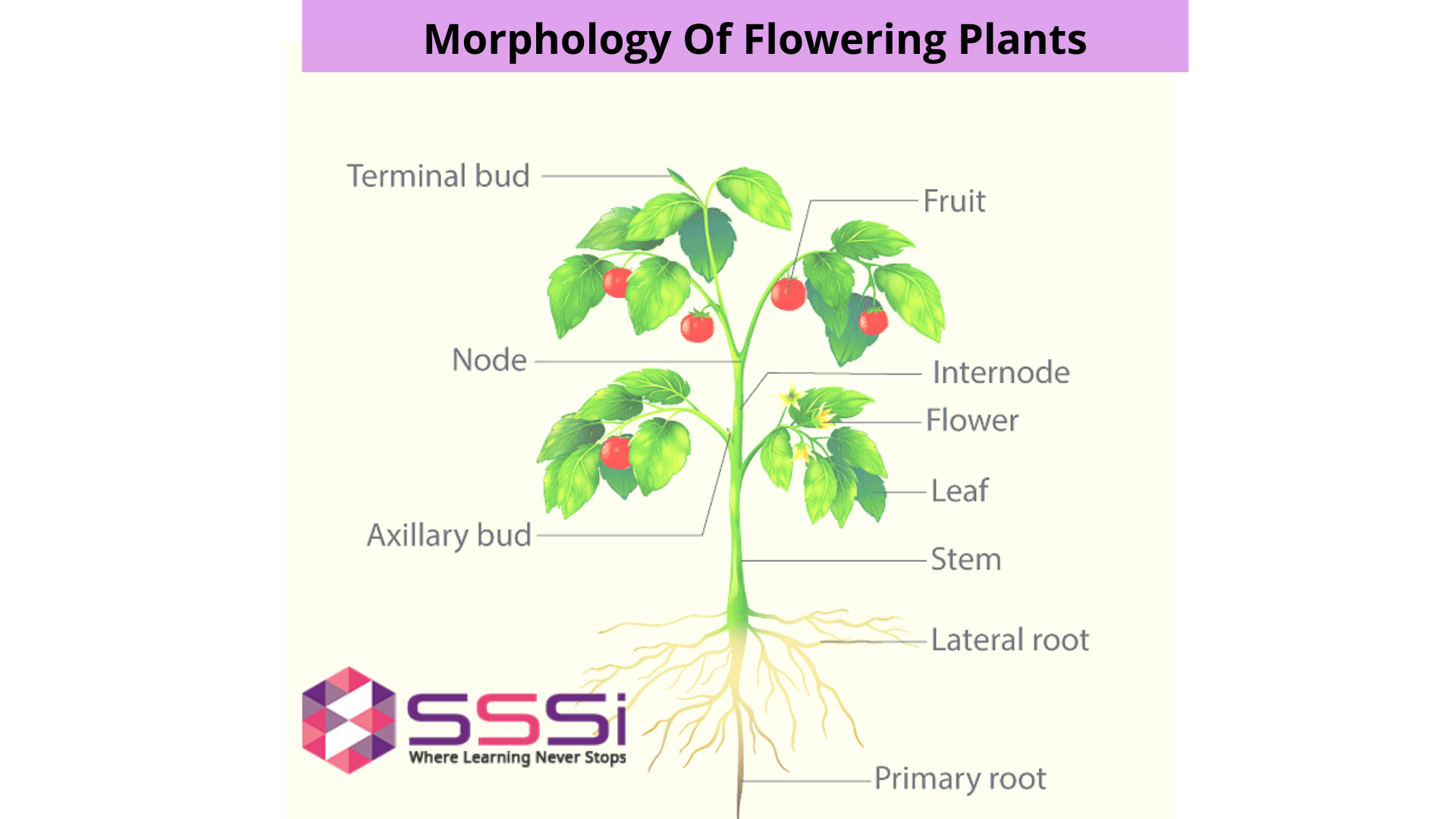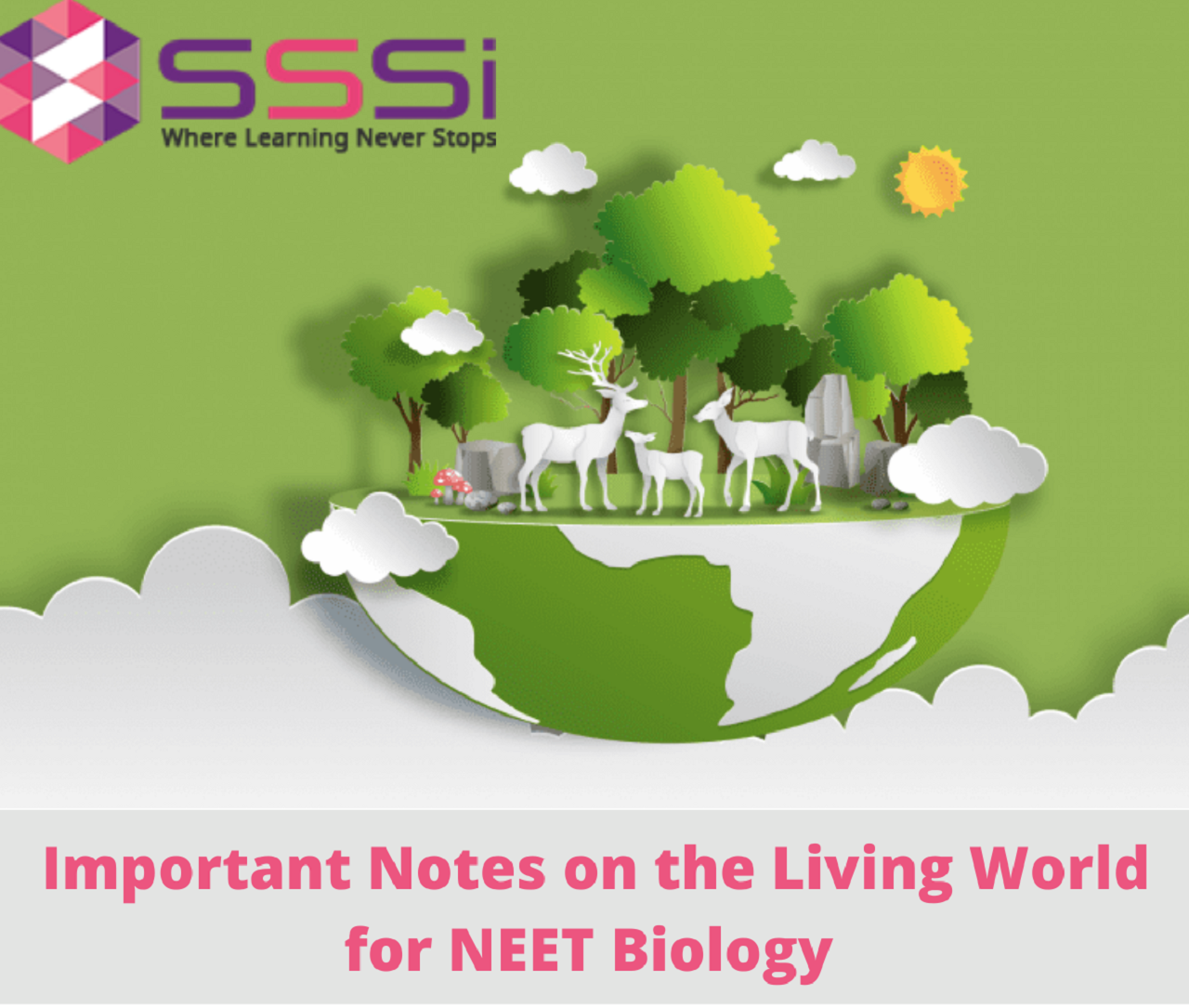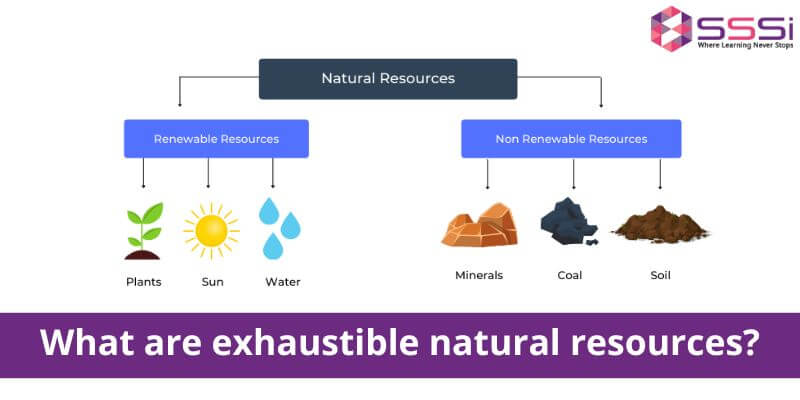
Introduction about the Morphology
The word morphology is derived from the Ancient Greek word "morphe", which means form, and "logos'' means word, study, and research.
Morphology is the discipline of science that studies the structure, features, and shape of organisms. Flowering plants (Angiosperms) have a great structural diversity that fascinates us, yet they all have a few things in common: root, stem, leaves, etc. The Morphology of flowering plants is important in terms of the board exams and the NEET aspirants. In this blog post, we will discuss the topic in detail.
Flowering of Plants
Flowering plants are the most diverse category of terrestrial planets, with over 300,000 species. Angiosperms are angiosperms that produce seed-bearing fruits. During the Triassic period, flowering plants developed from gymnosperms, and the first flowering plant appeared 140 million years ago.
Flowers are blooming plant's reproductive organs, and the primary distinguishing characteristic sets them apart from other seed plants. Angiosperm speciation has evolved due to these processes, allowing plants to adapt to a range of ecological niches.
The process by which blooming plants reproduce is called pollination. Pollen grains are carried from the anther of the male flower to the female flower's stigma, where fertilization and seed development occur.
Detailed Morphology Of Flowering Plant
Vascular plants form reflects their evolutionary history as terrestrial creatures that inhabit and draw nutrients from two different environments: below and above ground. They must take in water and minerals from under the earth's surface and CO2 and light from above.
The capacity to efficiently gather these resources may be traced back to the three fundamental organs of roots, stems, and leaves. A root system (which grows from the radicle of the germinating seed) and a shoot system are formed by these fundamental organs (which develop from the plumule of the germinating seed).
The ability to efficiently gather these resources may be traced back to the three basic organs of roots, stems, and leaves. A root system (which grows from the radicle of the germinating seed) and a shoot system are formed by these basic organs (which develop from the plumule of the germinating seed). If you are preparing this topic which is the Morphology of flowering plants for NEET, then you need to read the entire topic in detail as you may find several questions are asked about the topic.
The Root System
The root is a vascular organ anchor a plant in the soil, collects sap (minerals and water), and stores carbohydrates and other reserves.
The elongation of the radicle (basic form of the root) in most dicot plants leads to the production of primary roots that grow inside the soil. Secondary or lateral roots are formed when primary roots branch out further.
In plants, three types of the root systems are found:
Taproot System
- Primary roots and their branches form taproots.
- Mainly found in the dicotyledonous plants.
- Mustard seeds, banyan, grams, etc., are examples of taproot systems.
Fibrous Root System
- Mainly shown by monocots.
- Roots develop from the stem base and make the fibrous root system.
- It doesn't penetrate deep into the soil and remains close to the surface.
- Onion, maize, wheat, etc., are the exam of the fibrous root system.
Adventitious Root System
- Other than radicle of plants arise from other parts of the plant.
- Mainly found in the monocotyledonous plants.
- It develops under normal or under the condition of stress.
- Used for various purposes such as mechanical support, vegetative propagation
- Maize, oak, banyan trees, etc., are examples.
Functions of Root
The general function of the roots includes:
- Anchorage: roots penetrate the ground and provide anchorage to the plants as it holds the plant upright in one place.
- Storage: it stores food and nutrients for the plants.
- Translocation of essentials: helps to translocate water, nutrients and other essentials to the steam.
- Absorption of essentials: Hydrotropic roots spread beneath the surface, searching for water and nutrients. They take both the vital minerals and the water required for plant growth from the earth.
Regions of Roots
The following are the three regions of roots:
- Root cap
- Region of Maturation
- Region of Elongation
Modification of Roots
Many plants' roots have evolved to perform certain roles. They may vary their shape and structure and be adjusted to fulfil purposes other than water and mineral absorption and conduction.
For Support
- Root systems of tall trees are sometimes shallow.
- Reason: Due to moist conditions in the tropics.
- Aerial roots provide structurally support to the trunks
- Stilt roots are maize's aerial adventitious roots, and they're known as prop roots because they support tall, top-heavy plants.
For Food Storage
- Turnip, carrot, and sweet potato adventitious roots are enlarged and used to store food.
For Respiration:
- Pneumatophores are commonly known as air roots. Pneumatophores, which live in tidal wetlands, are produced by mangrove trees. They emerge from the ground and grow straight upwards, aiding in oxygen absorption.
Shoot System
It's an important element of the plant. It's the part of the plant axis that bears branches, leaves, flowers, and fruits and assists with water and mineral conduction. The plant's aerial component is formed from the plumule of an embryo or germinating seeds. Young stems are generally green, but they become woody and brown with time. The stem is transformed into various forms depending on the function.
Stem
It's a plant organ that bears buds and leaves. It is considered to be the autotrophs as it grows above the ground. The stem mainly grows in the direction of the lights and away from the soil.
It develops from the plumule of a developing seed's embryo and bears nodes and internodes.
The stem's primary role is to extend and orient the shoot such that photosynthesis when the leaves are maximized. It also raises the reproductive structures, making pollen and fruit distribution easier.
Modification of Stem
A few plants have stems with four alternative functions, such as asexual reproduction or food storage. Many of these modified stems, such as rhizomes, stolons, and tubers, are mistaken for roots, even though they are modified types of shoot. The modified stems allow protection, food synthesis, vegetative propagation, and other functions to keep the plants healthy and growing despite any conditions.
Stem Characteristics
The following are the essential characteristics of the stem:
- It develops plumule and epicotyl of the embryo
- The shoots in angiosperms are differentiated into nodes and internodes.
- The young steam is photosynthetic and green.
- Presence of multicellular hair
- These are erect and grow away from the soil in the direction of sunlight.
- Presence of terminal buds at the stem’s apex.
Download PDF notes for Morphology of Flowering Plants
If you face challenges in your NEET preparation, our online NEET preparation classes are only for you. Ace your exam preparation with us.
Leaves
In most vascular plants, the leaves are considered the main photosynthetic organ. Along with capturing light, it also helps in exchanging the gases with the dispersed heat and atmosphere and safeguarding themselves from the herbivorous and pathogens.
The node has a bud in its axil, and the leaves sprout at the node. The axillary bud develops into a branch later on. They are grouped in an acropetal order and arise from the apical meristems.
A leaf comprises a flattened blade called the lamina, and a stalk called the petiole (which joins the leaf to the stem at a node). Monocots and dicots have different arrangements of veins (leaf vascular tissue).
The monocots have parallel, equal-diameter primary veins that span the length of the blade (parallel venation). They feature a branching network of veins that emerge from the midrib in dicots (reticulate venation).
The arrangement pattern of leaves on the stem or branch is known as phyllotaxy. It's divided into three types: alternating, opposite, and whorled.
Modification of Leaves
The leaves undergo modifications under certain conditions to carry out specific functions. On the other hand, some species' leaves have evolved to undertake additional purposes like support, protection, storage, and reproduction. The morphological characteristics of leaves are frequently the result of genetic instructions tinkered with environmental factors.
In peas, they are turned into tendrils for climbing, while in cacti, they are transformed into spines for defense. Onion and garlic leaves have fleshy leaves that store nourishment.
Insectivorous plants such as Venus flytrap, and pitcher plants, the leaves get turned to carry out the special functions.
Characteristics of Leaves
- It develops from the node.
- Exogenous in origin
- Limited growth
- Presence of bud at its axis.
- No apical buds on the leaves.
Functions of Leaves
The following are the essential functions of the leaves:
- Photosynthesis
- Transpiration
- Storage
- Guttation
- Defence
Flower
It's the reproductive part of the plant. A flower is considered the revised shoot where the shoot apical meristem modifies into the floral meristem.
The apex produces numerous kinds of floral accessories laterally at sequential nodes other than the leaves. It is always a solitary flower when the stem tip develops into a bloom.
In angiosperms, the flower is the reproductive unit.
The pedicle is the distinctive stalk that supports the flower. The receptacle/thalamus is inflated, and the expanded top section of the pedicel has flower leaves.
Calyx, corolla, androecium, and gynoecium are the four floral whorls found in most flowers.
Functions of Flowers
The following are the essential functions of the flower:
- Helps in the process of reproduction
- Gametophytes grow inside the flower.
- Without fertilization, the diasporas produce.
- Attract insects and birds, which helps in pollination
- The flower’s ovary developed into seed-bearing fruit.
If the subject makes you confused, then no worries. Our Biology online classes will help you build the foundational base without any complexities. Make your wise decisions and hire our experts to achieve a good rank on the merit list.
Fruit
The fruit is the angiosperm's distinguishing feature. It's a fully grown ovary that's been fertilized. Parthenocarpic fruit is created when the ovary does not fertilize the fruit. During fruit development, the ovary wall thickens into the pericarp, the fruit's thicker wall. The ovary wall of certain fruits (such as soybean pods) dries up entirely at maturity, whereas the ovary wall of other fruits (such as grapes) remains mushy.
Seed
After fertilization, the ovule develops into seeds. Seeds have a seed coat and an embryo. A radicle, an embryonal axis, and one or two cotyledons make up the embryo.
If you are searching for the detailed Morphology of Flowering Plants NEET notes, you landed at the right place. If you have made your decision of appearing for the NEET exam, then you can enrol in our NEET preparation online classes as the faculty are from the topped ranked university of India and have years of experience in the same field. The following are the additional key benefits you can avail yourself:
- Learn from scratch.
- Unlimited doubt clearing sessions and revisions
- Affordable fee structure
- Regular practice of previous years' questions and mock test series.
Fill out the registration form now to book your FREE Online Demo Class Session.






